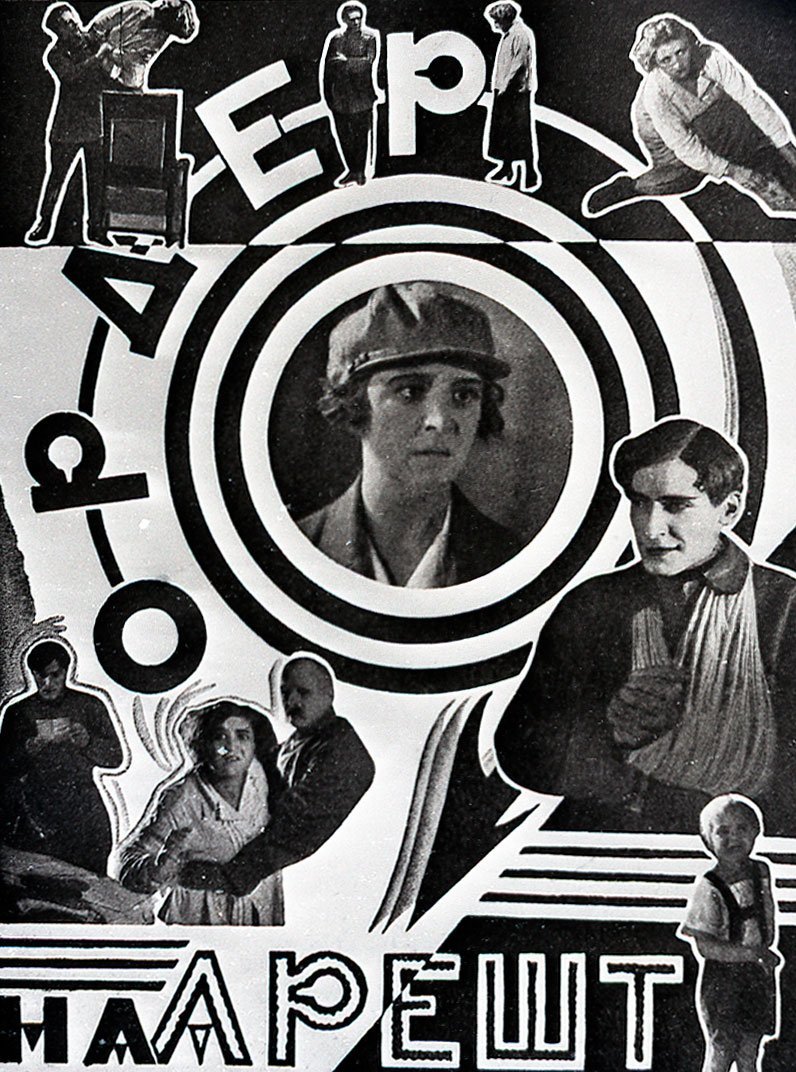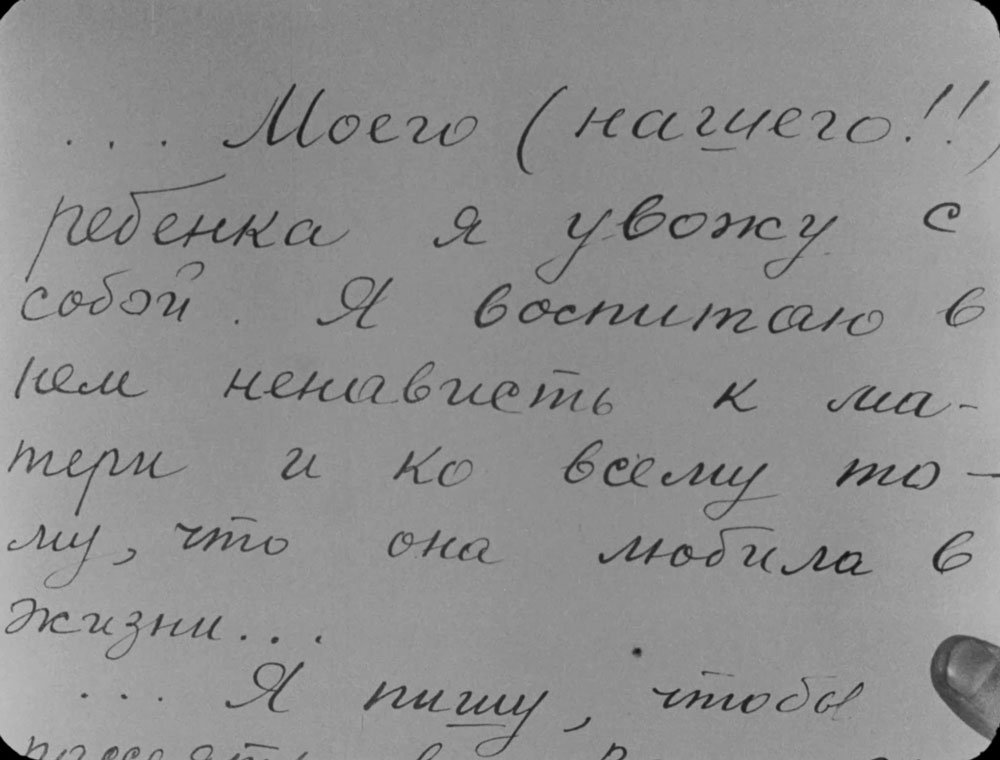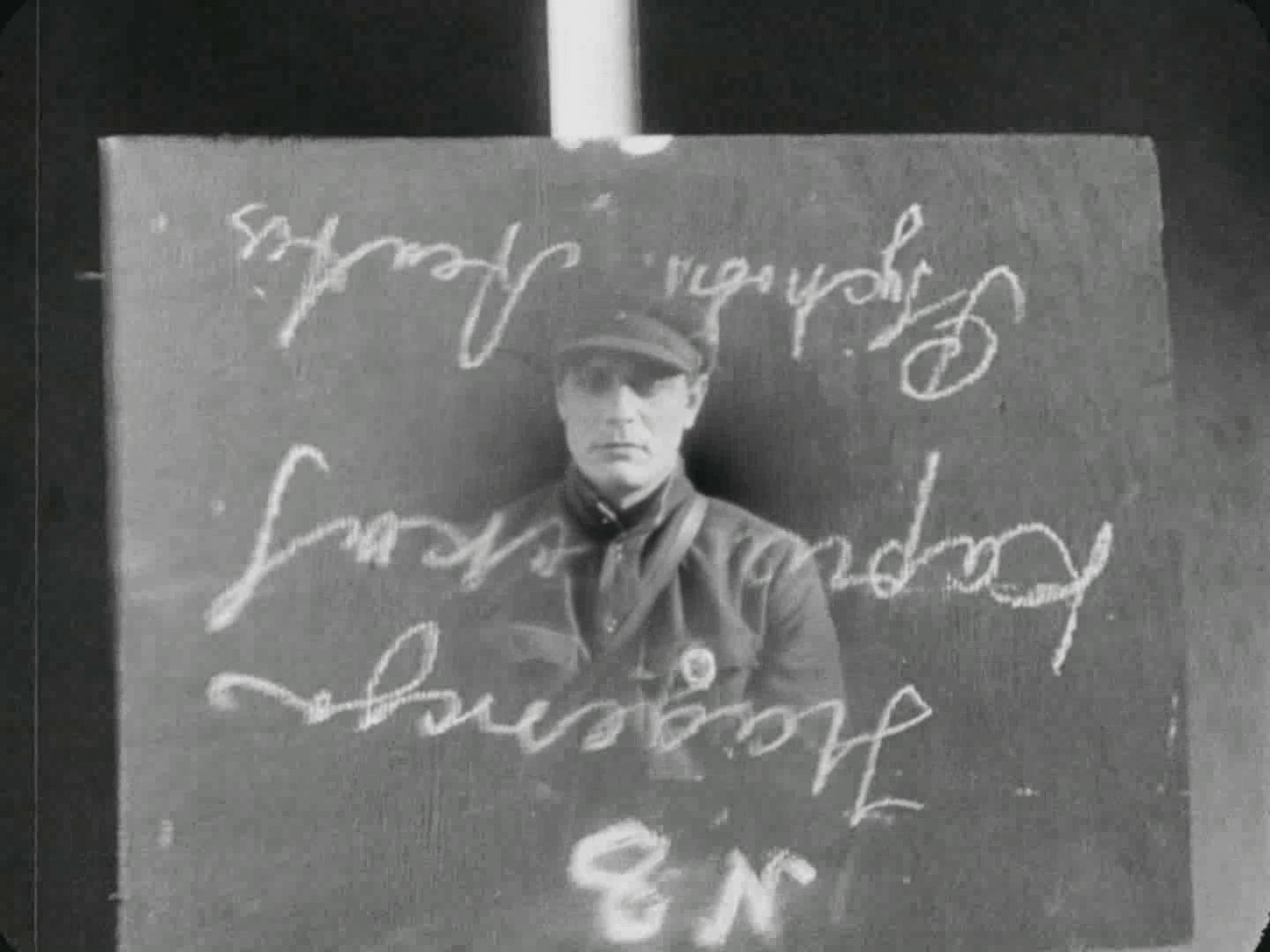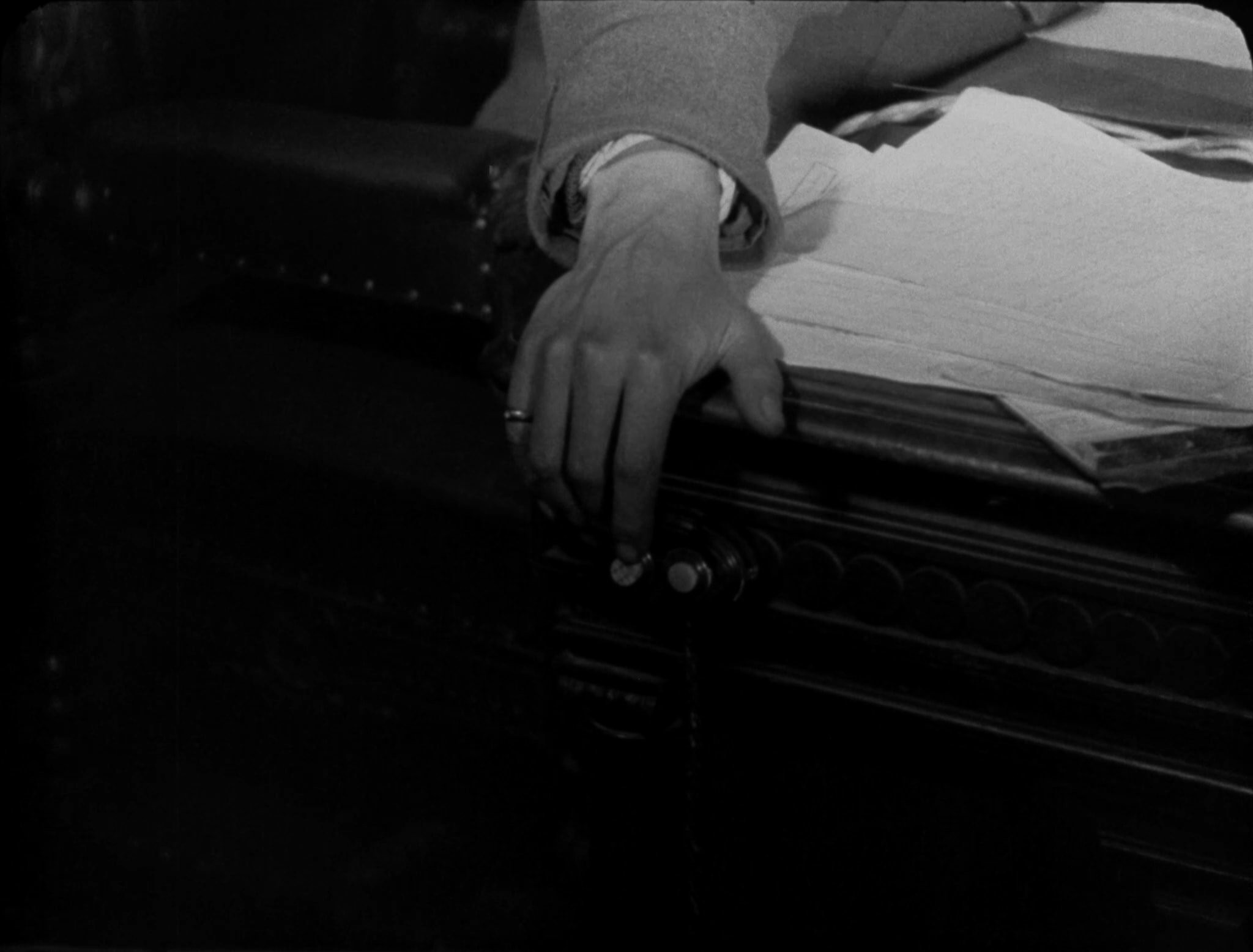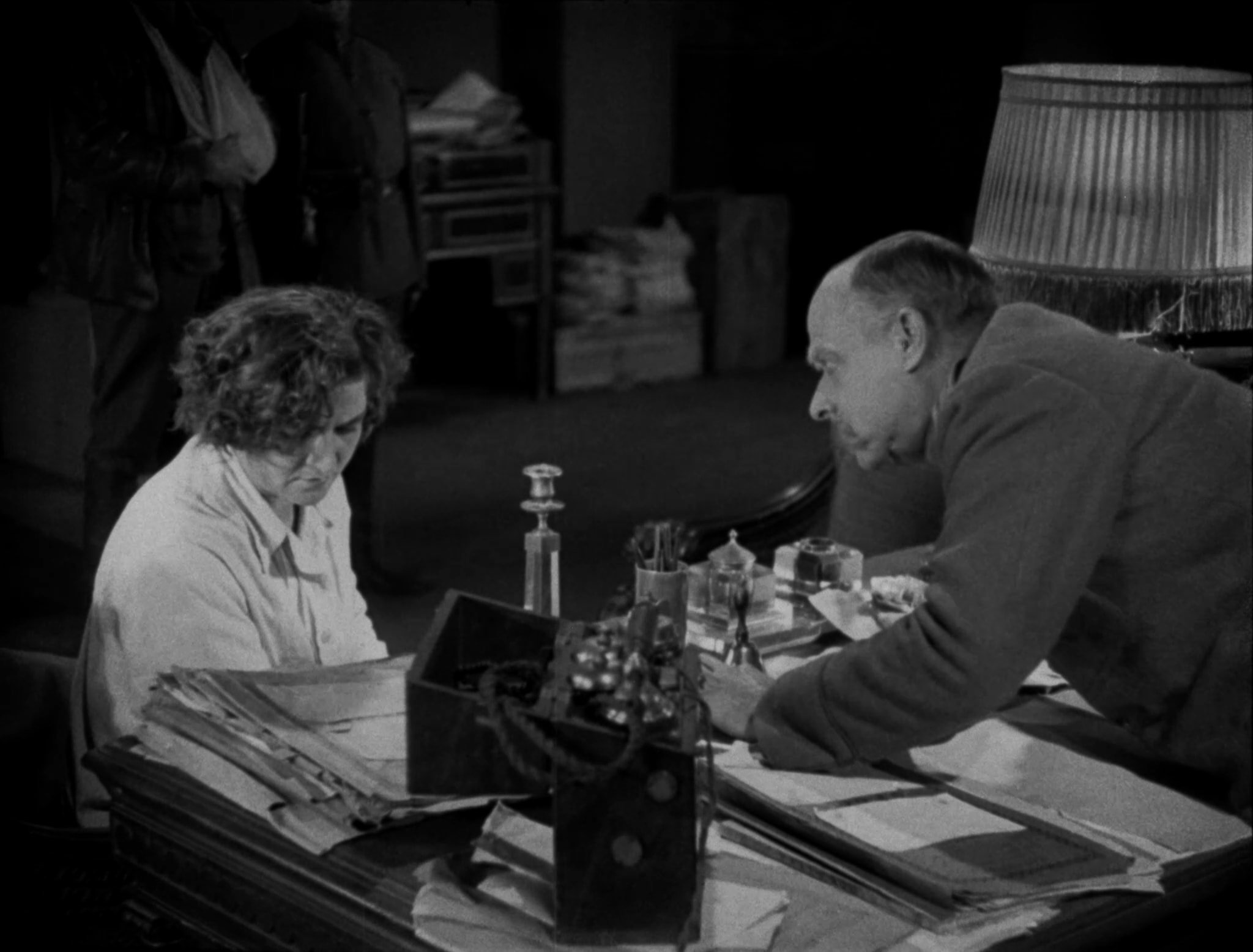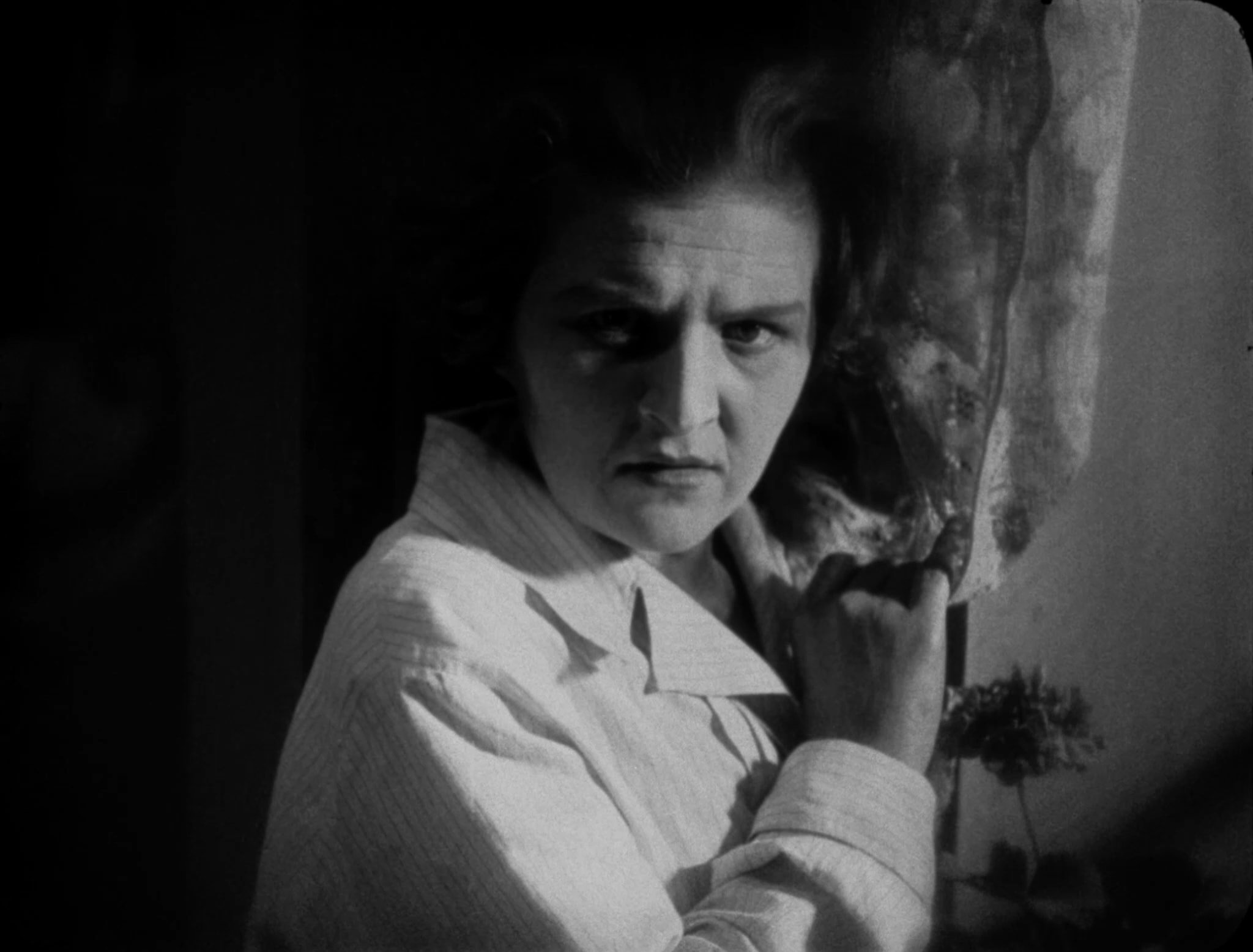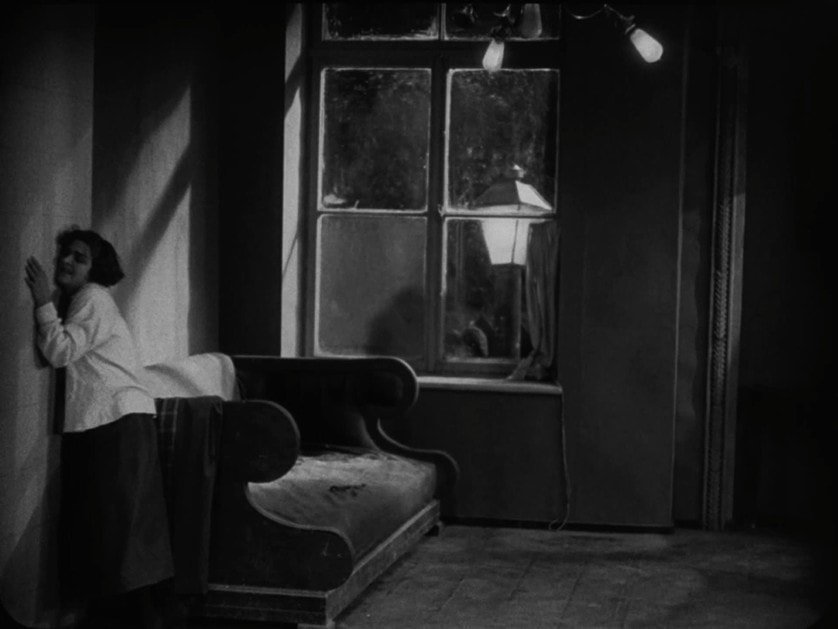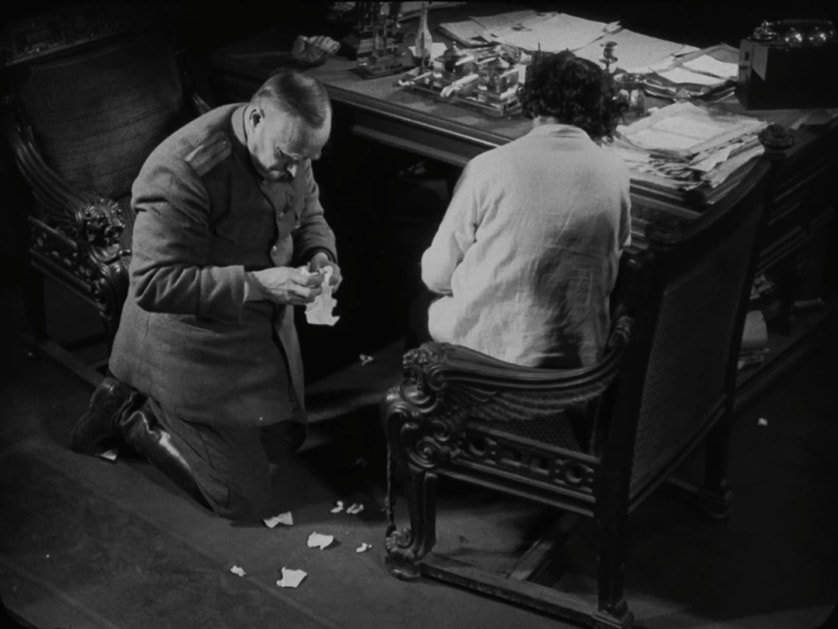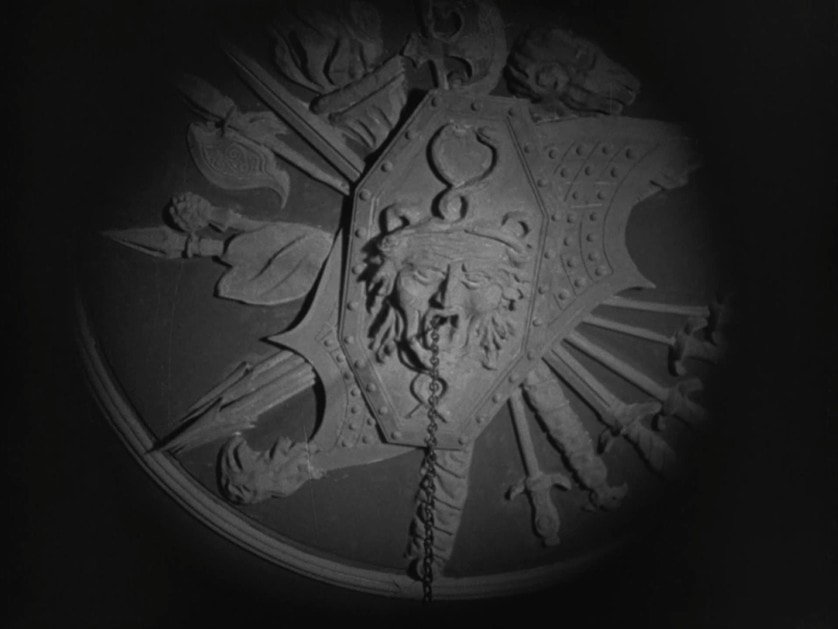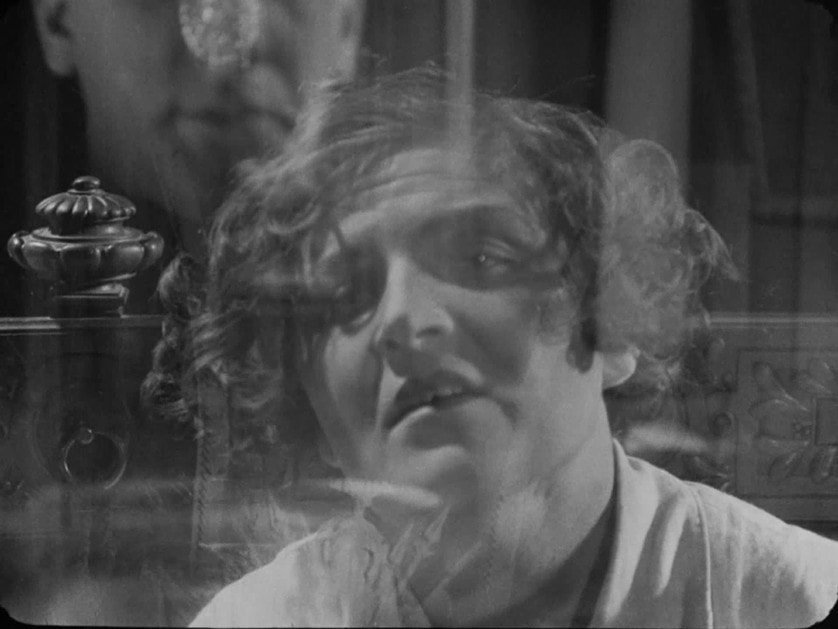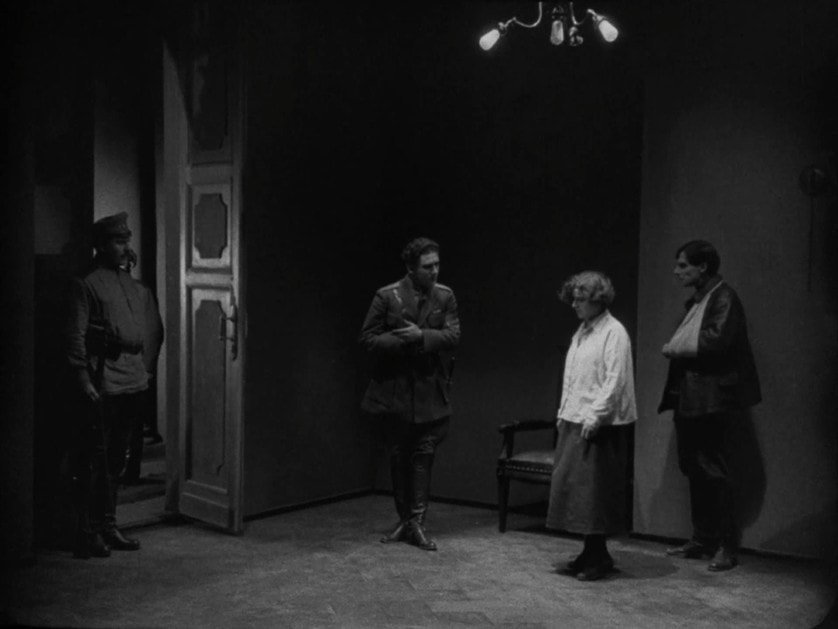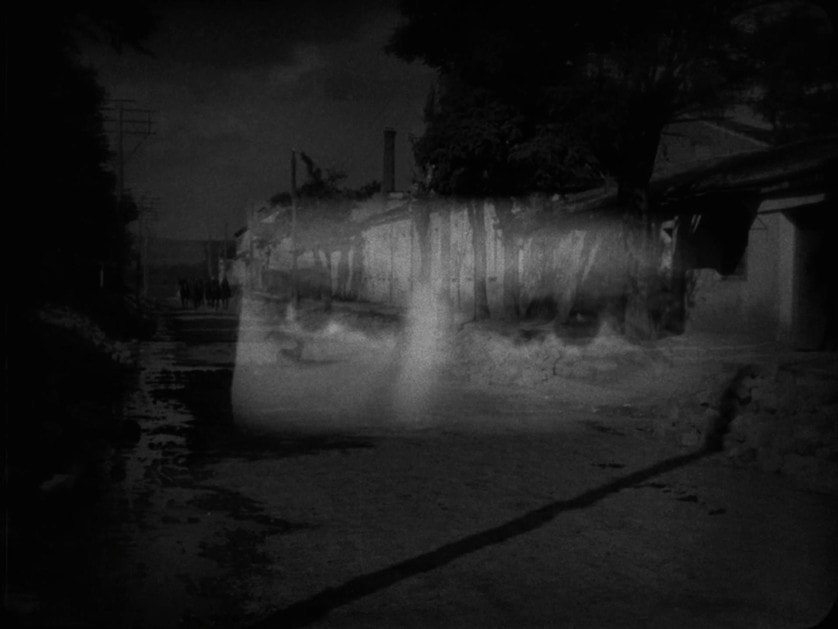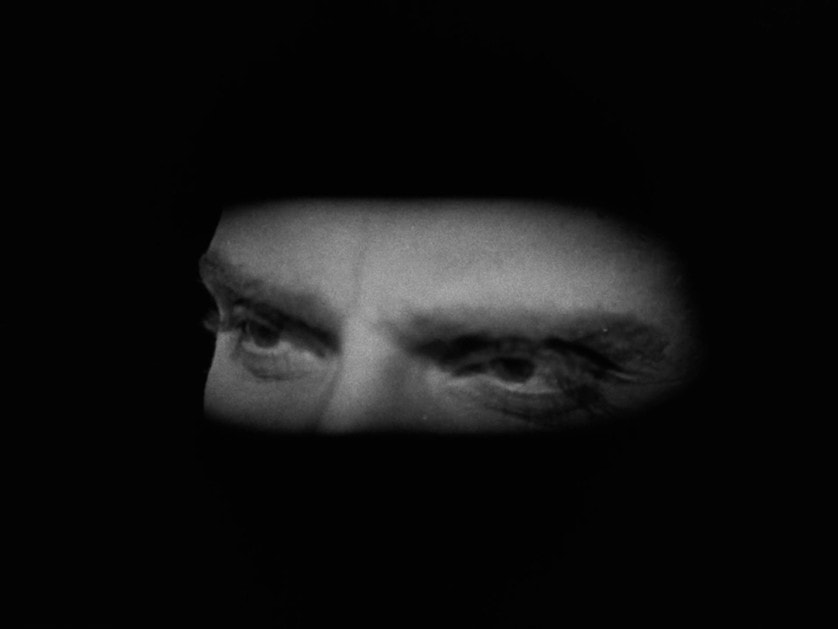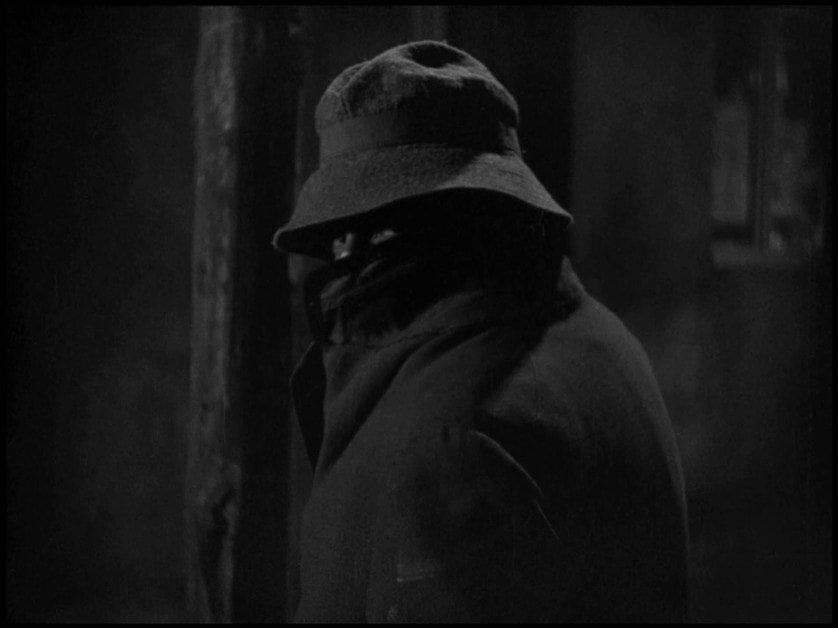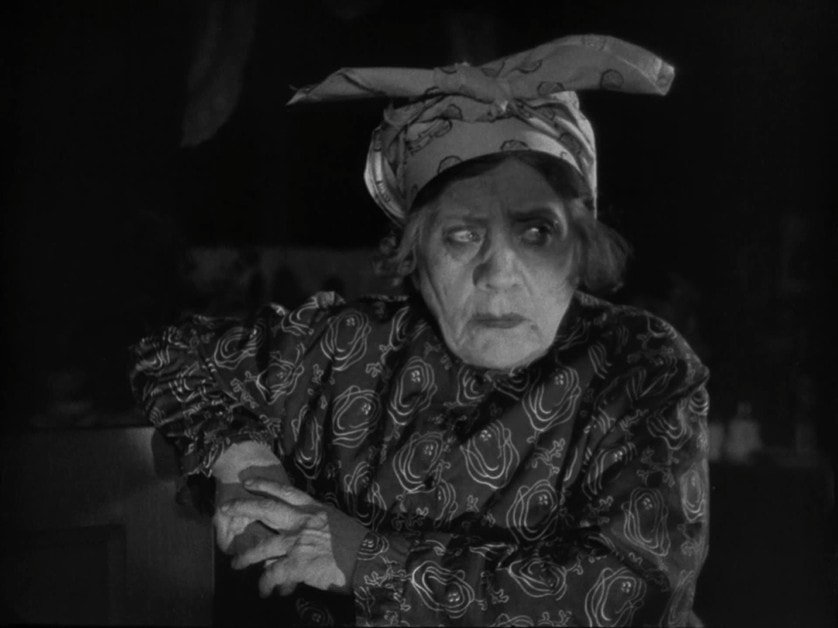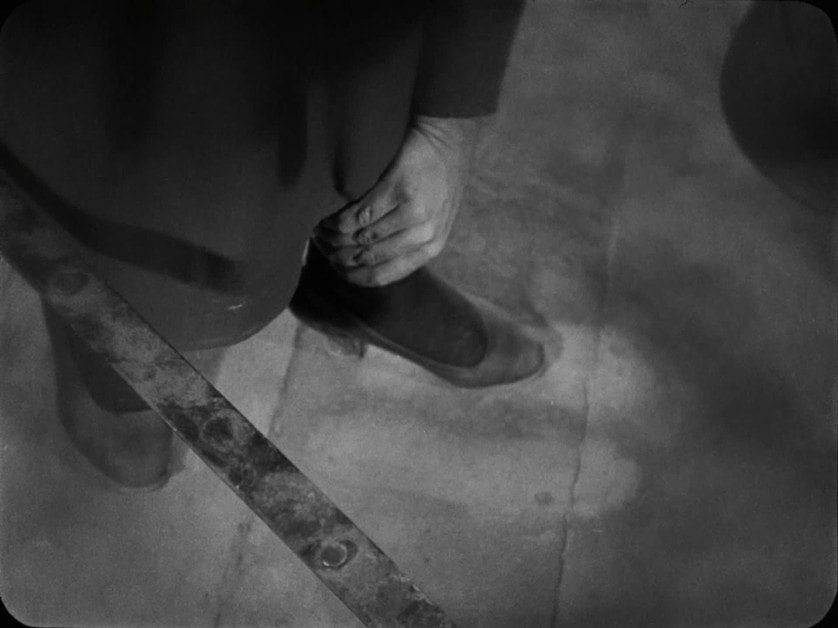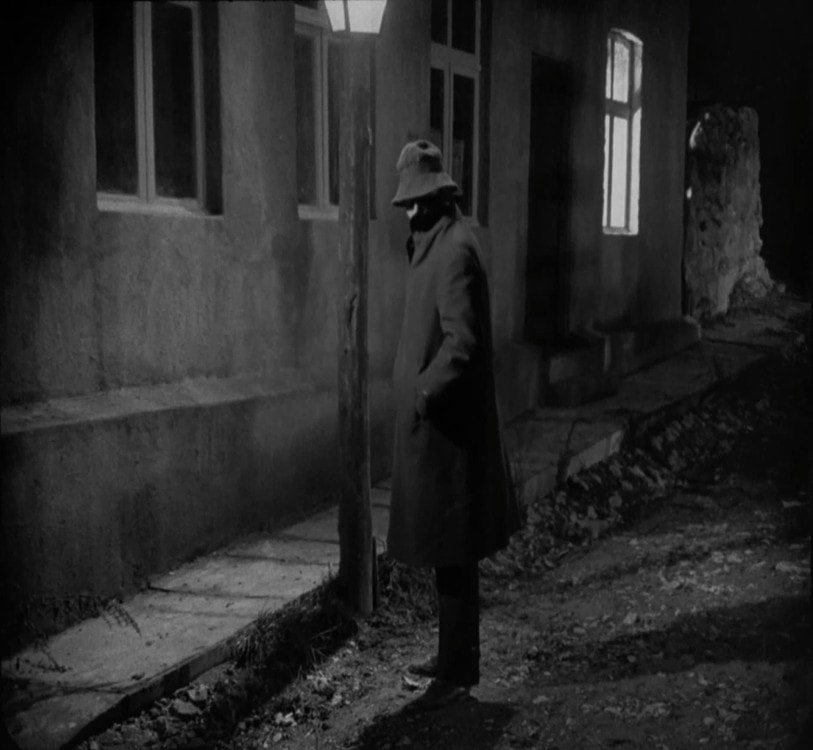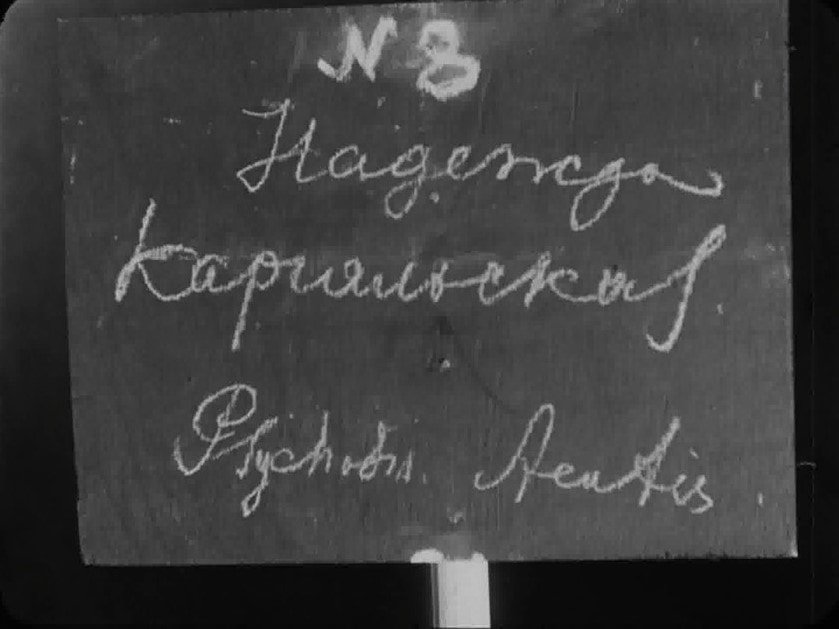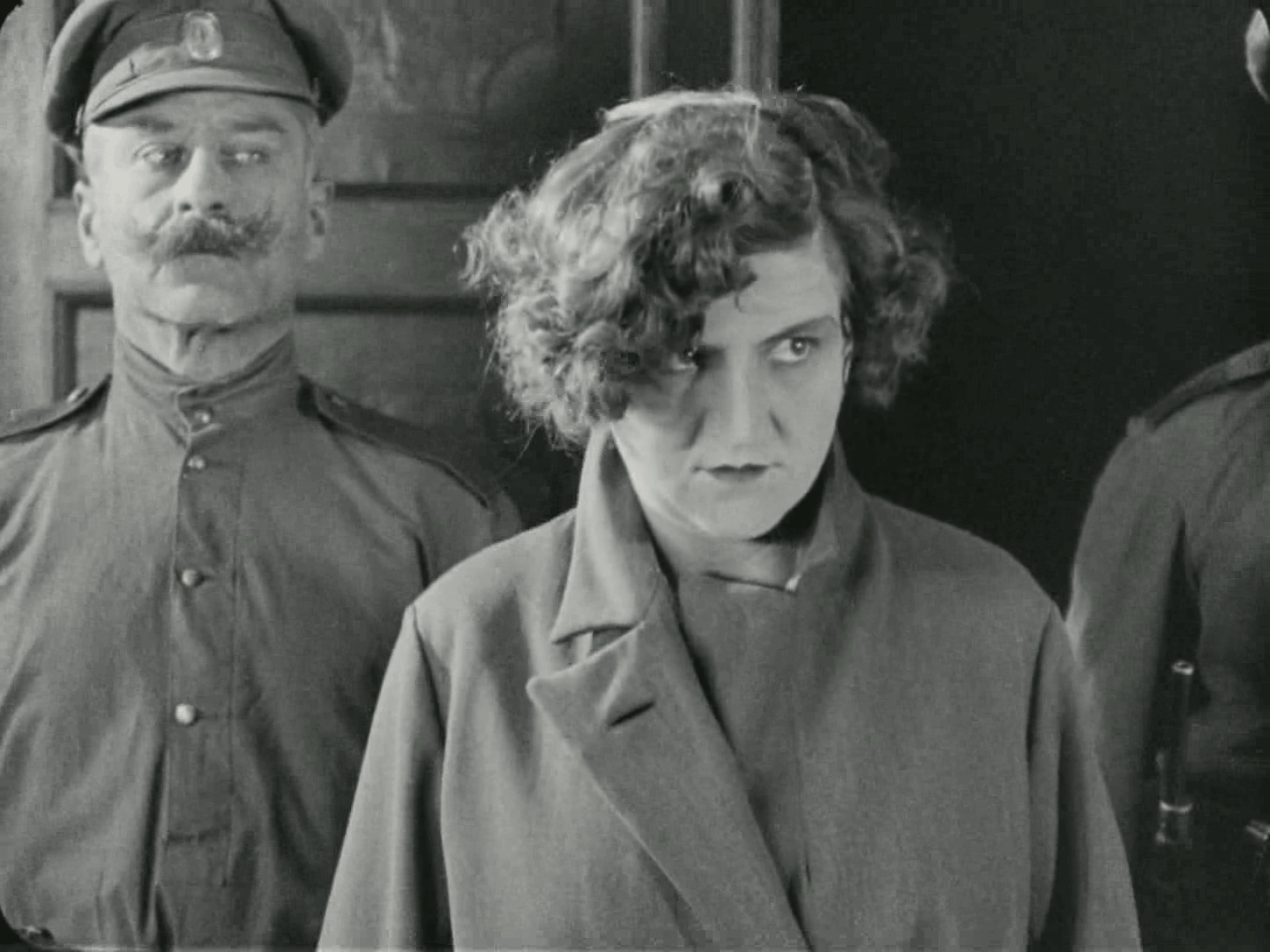
Arrest Warrant / Order na aresht
1926
Ukrainian SSR
VUFKU
84 min
Heorhii Tasin
Solomon Lazurin
Albert Kiun
Vira Varetska, Khairi Emir-Zade, Alik Lihovetskyi, Nikolai Kutuzov, Nikolai Panov
The “Reds” are leaving the city, and the head of the revolutionary committee, Serhii Karhalskyi, asks his wife, Nadiia, to stay behind and hide a secret package with documents. When the “Whites” enter the city, they immediately conduct a search at Nadiia’s place. They don’t find the package, but they arrest Nadiia. A counterintelligence officer of a Hite Guard interrogates her extensively at their headquarters. However, Nadiia remains silent and steadfastly conceals the location of the package, despite blackmail and threats to her son, husband, and even her sanity.
Arrest Warrant was directed by Heorhii Tasin, the head of the Yalta and Odesa Film Studios, a great admirer of German expressionism, and the director of the first Soviet “Eastern” film, Alim, which depicted the life and struggle of Crimean Tatars. The film was made in collaboration with German cinematographer Albert Kühn and the renowned Crimean Tatar theatrical actor and the first actor to receive People’s Artist of the Crimean Autonomous Soviet Socialist Republic award, Khairi Emir-Zade.
Inspired by the life drama of the anti-imperial revolutionary Yehor Sazonov, Arrest Warrant is the first Ukrainian Soviet film that addresses the traditional silence of women. Nadiia is being coerced into speaking, but it is her ability to remain silent that allows her to resist the rational world of men and war.Nadiia Karahalska’s interrogation effectively becomes a Soviet analogue of Joan of Arc’s trial in The Passion of Joan of Arc, which Carl Theodor Dreyer would make two years after Tasin’s film. Therefore, despite its entertaining aura with espionage transformations, psychological torture, and the romantic angle of revolutionary committees, Arrest Warrant is also a reflection on the role of women in historical/hysterical processes during civil wars.
